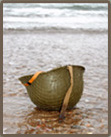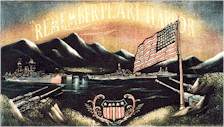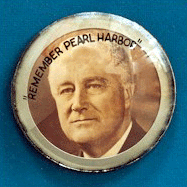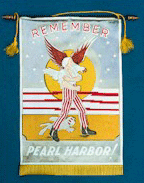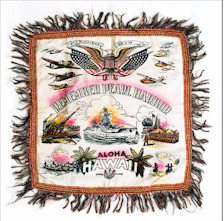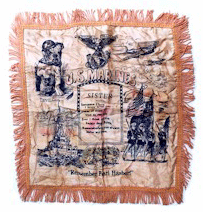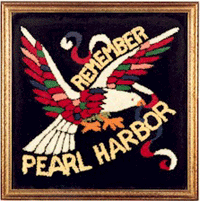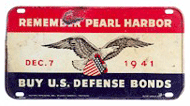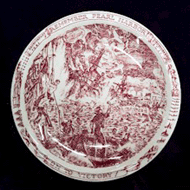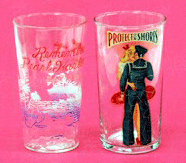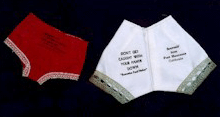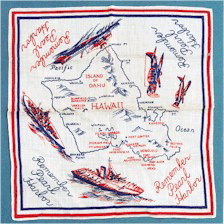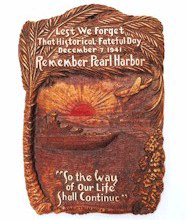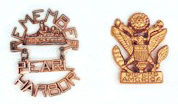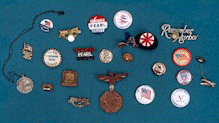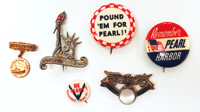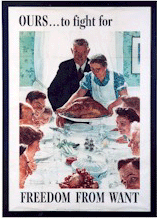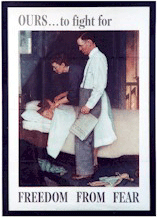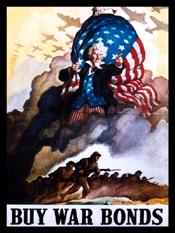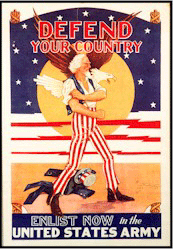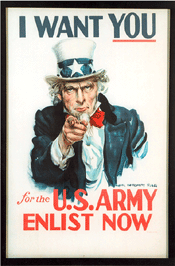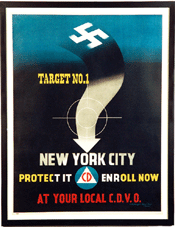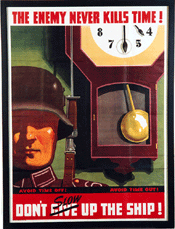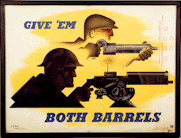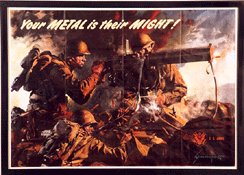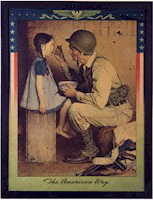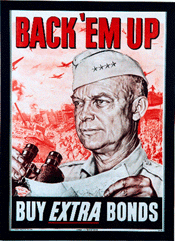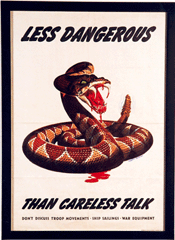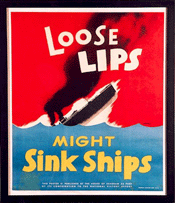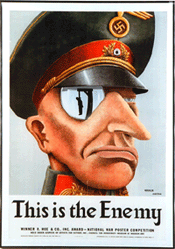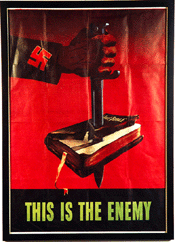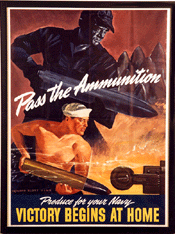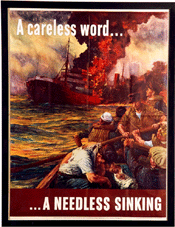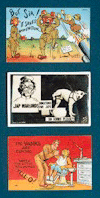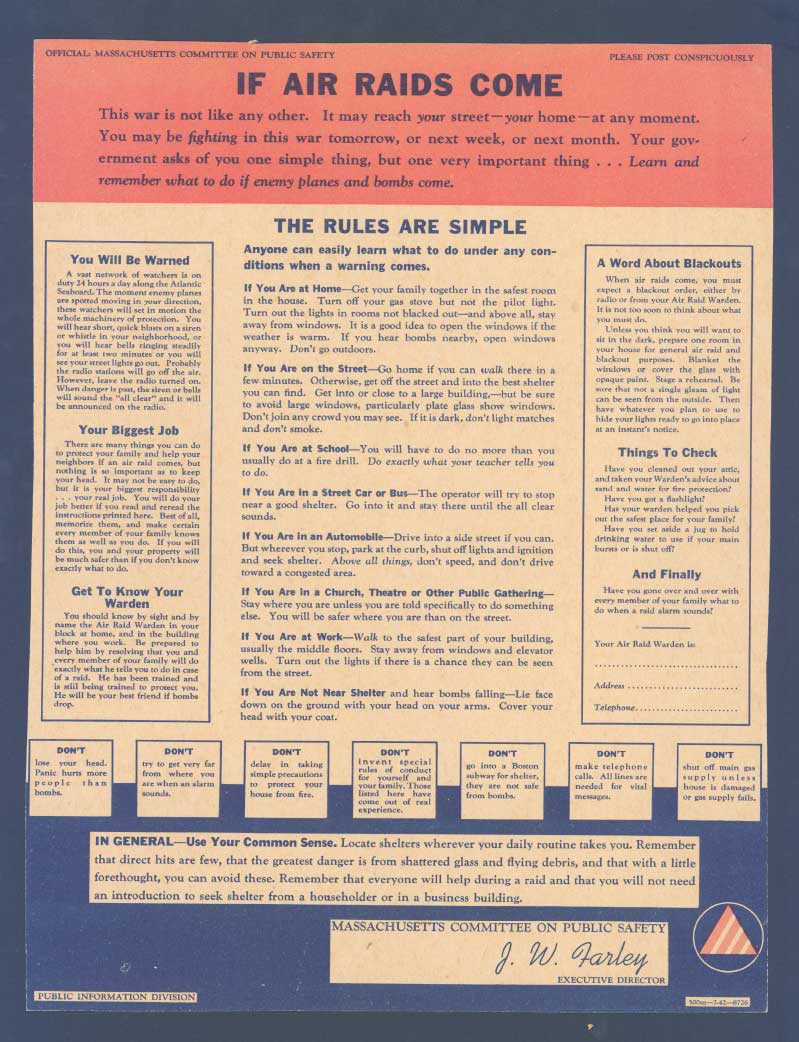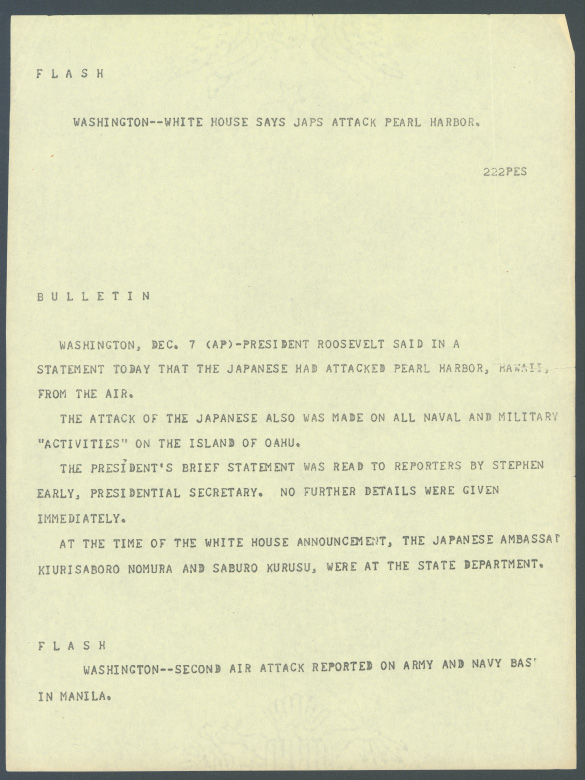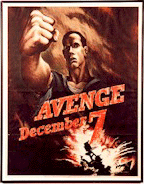 |
"Remember Pearl Harbor!" After the December 7, 1941 Japanese sneak attack that signaled the US entrance into the war, "Remember Pearl Harbor!" became the battle cry in the United States. Home front life was dramatically changed.
|
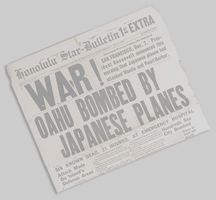 |
|
| |
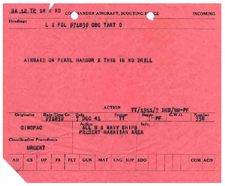 |
THE FIRST MESSAGE OF THE ATTACK ON PEARL HARBOR:
The original message sent by the "Commander Aircraft, Scouting Force", Lt. Cmdr. Logan Ramsey, from Pearl Harbor to "All U.S. Navy Ships present Hawaiian area", giving the first news:
"AIRRAID ON PEARL HARBOR X THIS IS NO DRILL." |
|
| |
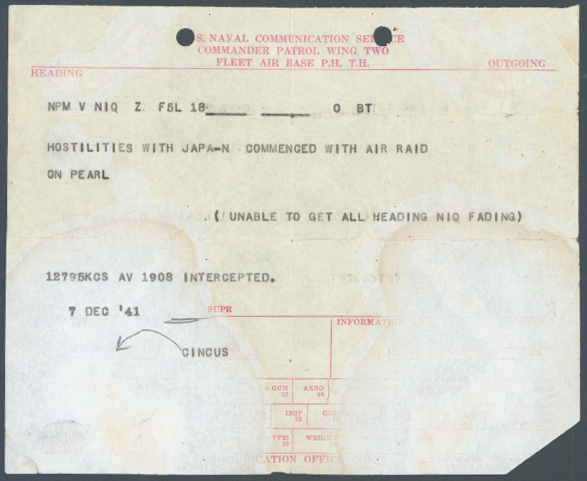 |
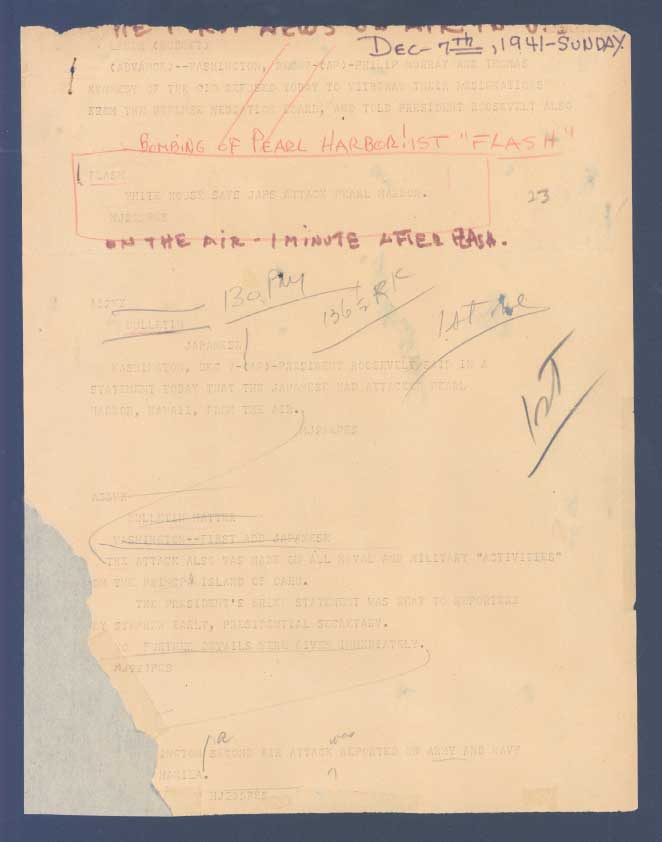 |
First News Flash |
|
| |
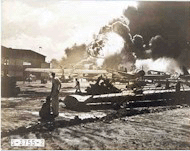 |
News photo of the wreckage-strewn American naval air station at Pearl Harbor during the Japanese raid. |
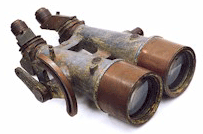 |
The huge binoculars from the bridge of the USS Arizona, sunk during the attack on Pearl Harbor. |
|
| |
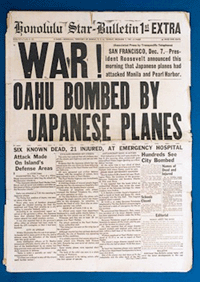 |
THE FIRST NEWSPAPER ACCOUNT: The Honolulu Star-Bulletin, from the afternoon of Dec. 7, 1941. |
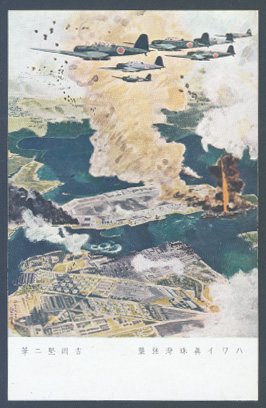 |
Japanese postcard celebrating the attack on Pearl Harbor |
|
| |
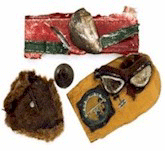 |
Pieces of Japanese planes shot down over Pearl Harbor, and the personal equipment of pilots. |
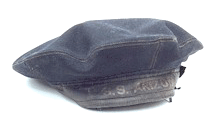 |
Sailor's cap from the U.S.S. Arizona |
|
| |
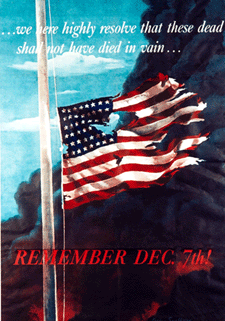 |
"Remember Dec. 7th!" Poster by Allen Saalburg, published by the Office of War Information, 1942. The quotation is from the conclusion of Abraham Lincoln's Gettysburg Address. |
|
| |
| Americans expressed their feelings about Pearl Harbor with an unprecedented expression of sentiment: |
|
| |
| A variety of pins issued to "Remember Pearl Harbor." |
|
| |
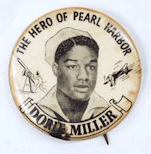 |
Pin honoring Pearl Harbor hero Dorie Miller. A black messman who was untrained in machine gun use due to rigid Naval segregation policies, Miller took over a machine gun aboard the USS West Virginia and was officially credited with downing two Japanese planes. Miller was honored as one of the first heroes of World War II, and six months after the attack was given the Navy Cross by Admiral Chester Nimitz. |
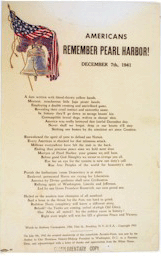 |
Poem, "Americans Remember Pearl Harbor", by Anthony Carmagnola of Brooklyn, published on July 4, 1943. |
|
| |
 |
The American Home Front faced the reality of war. Wartime rationing, the transformation of the economy to fight the war, the anti-Japanese and anti-German atmosphere, and the concern about spies and saboteurs, are stressed in the Museum's collections. |
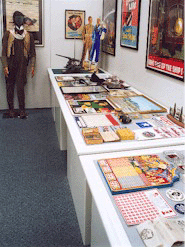 |
|
| |
|
| |
 |
Ashtrays showing Hitler, Tojo and Mussolini |
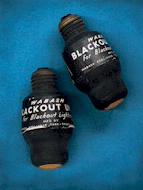 |
Light bulbs used for blackout lighting. |
|
| |
 |
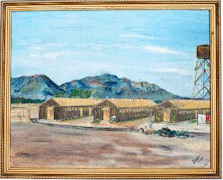 |
After Pearl Harbor, many people of Japanese ancestry were rounded up on the west coast of the United States and placed in internment camps. This painting of one of those camps was done by an internee. |
|
| |
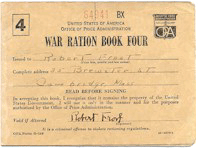 |
Ration book used by Robert Frost. |
|
| |
| Anti-Japanese pins and postcards. |
|

